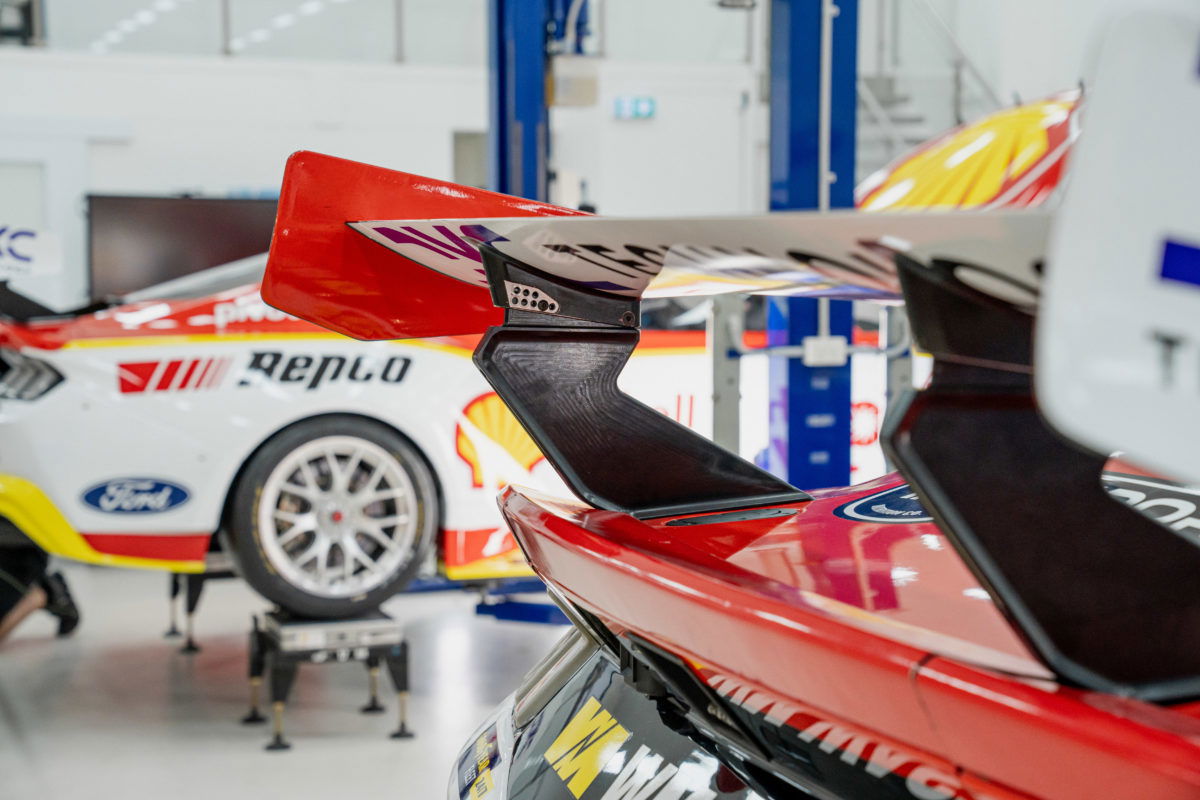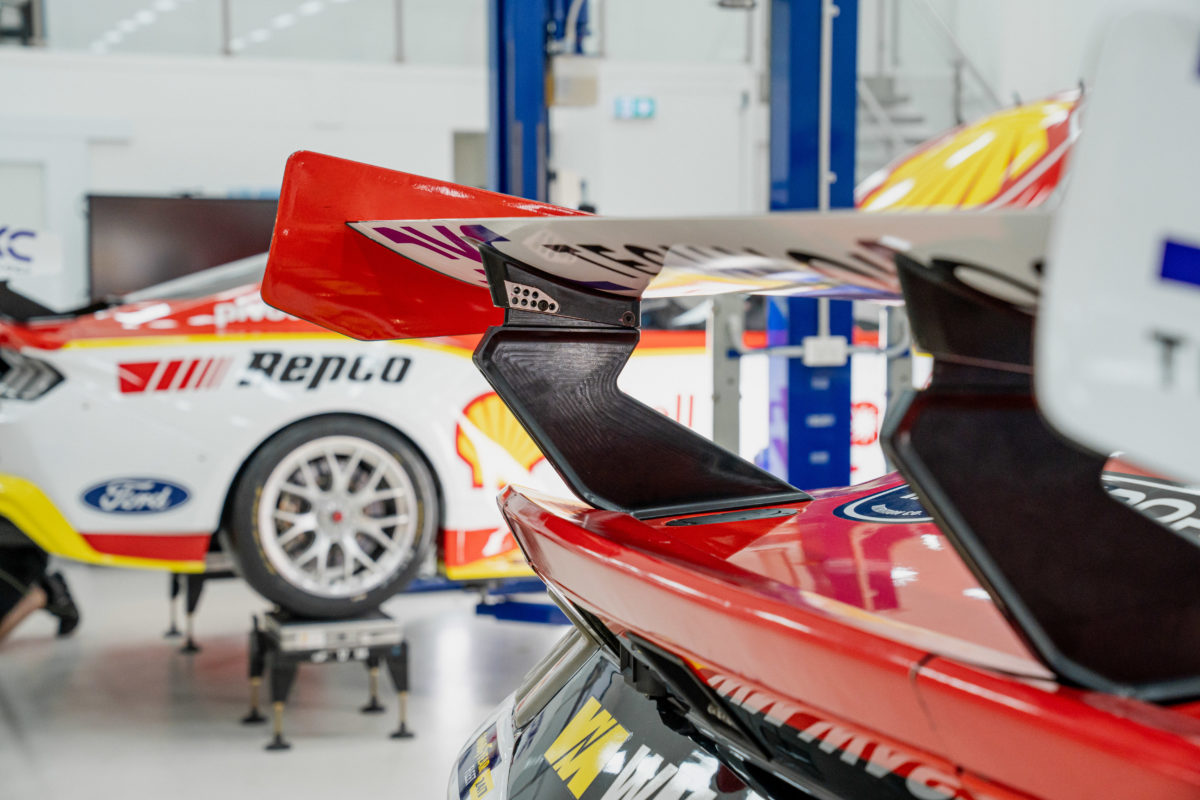

Ford claims its Supercars teams will still be at a disadvantage relative to their Chevrolet rivals despite the parity changes ahead of this weekend’s Boost Mobile Gold Coast 500.
According to Ford, it proposed a package of aerodynamic and engine changes, the former of which has been approved but the latter not.
As such, the Blue Oval argues that Mustang teams “will remain at a larger disadvantage this weekend.”
It cites analysis by homologation team Dick Johnson Racing which is said to have calculated a 0.42s lap time disparity at Mount Panorama, where the Repco Bathurst 1000 unfolded earlier this month.
The combination of aero and engine changes would have reduced that disparity by 0.308s, according to DJR simulations.
While no hypothetical figures have been given for the Gold Coast, Ford reasons that it will remain at a larger disparity than it otherwise would have been had the full package of changes been given the go-ahead by Supercars.
Ford did, however, welcome Supercars’ other announcement today, regarding an enhancement of parity processes including wind tunnel testing and transient dyno running in coming months.
It detailed the Gold Coast aero changes as follows:
- Front Fascia ‘packer’ to reduce depth of lower ‘fog light’ bezels
- ‘Wheelband’ insert ahead of front wheel
- Side skirt trailing edge addition
- Rear wingspan: +100mm
- Rear wing position: up 25mm, back 25mm
- Rear wing maximum angle: 7 degrees
See below for full statement from Ford
Ford statement on Supercars parity
Following the activation of the Supercars Parity Review System at the Repco Bathurst 1000 Dick Johnson Racing, in conjunction with Ford Performance, conducted a review of the parity deficit.
This extensive review demonstrated a need for both aerodynamic and engine updates.
Ahead of the Boost Mobile Gold Coast 500, Supercars has approved changes only to the aerodynamics of the Mustang GT Supercar, which will continue to leave Ford teams at a disadvantage this weekend.
DJR established that a parity deficit existed using the process outlined in the Supercars Parity Review System. Through the available vehicle and timing data, DJR established a lap time deficit of 0.42s per lap compared to the Camaro at Mount Panorama.
To address this issue, DJR proposed adjustments to the Mustang’s aerodynamic and engine performance. The proposed changes were validated through CFD development, track testing, dyno testing and simulation tools, and were designed to reduce the parity deficit.
The requested, and subsequently approved, aerodynamic changes include modifications to the front fascia and side skirts, as well as adjustments to rear wing position, wingspan, and wing angle.
These changes have resulted in a front downforce reduction, minor rear downforce increase, total downforce reduction, and a drag reduction. The combined changes have shifted downforce balance rearward.
The proposed engine changes included a requested torque increase of 8Nm throughout the entire rev range, via a larger restrictor and minor calibration changes.
DJR’s analysis revealed the deficit could be apportioned as follows:
Aerodynamics
Total – 0.24 sec/lap
Engine
Total – 0.18 sec/lap
According to simulations, combining the proposed aerodynamic and engine changes would have resulted in a total lap time reduction of 0.308 seconds, bringing the total deficit down to 0.112 seconds per lap.
However, with Supercars only approving the aerodynamic update, Ford teams will remain at a larger disadvantage this weekend.
Ford and its teams welcome Supercars announcement that they are expanding their parity methods and tools. We hope this expansion allows for the achievement of true technical parity, a cornerstone of the series.
Focus now shifts to this weekend’s Boost Mobile Gold Coast 500, with Ford teams and drivers aiming to maximise results with their updated Mustang race cars and provide Ford fans the show they deserve.



















